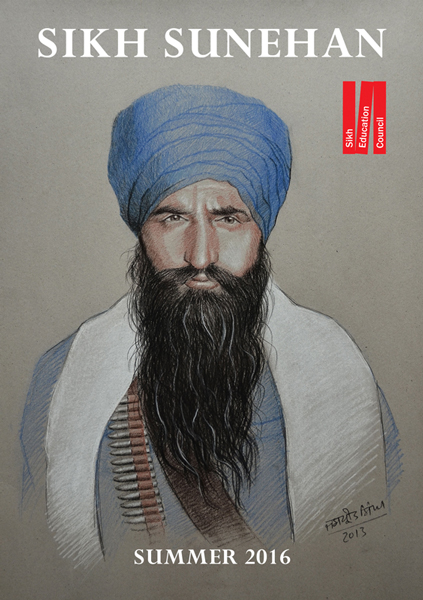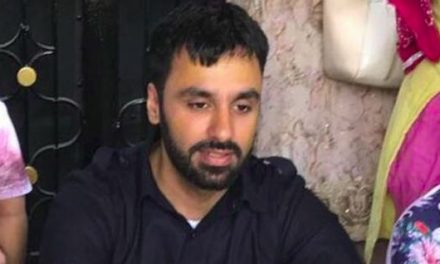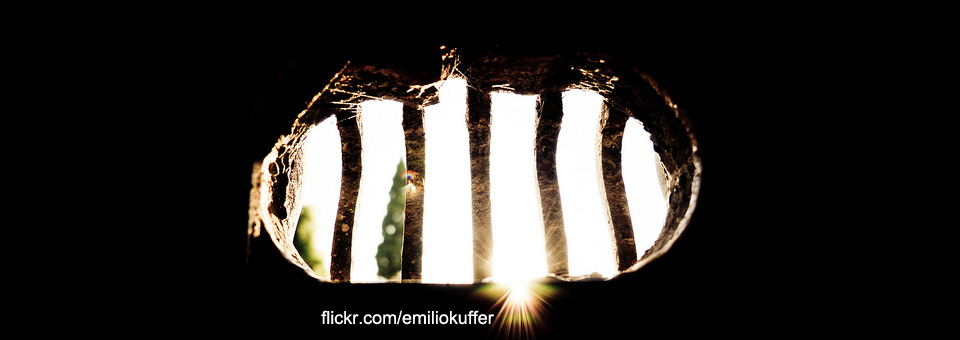I wrote a lengthy article last summer for the Sikh Education Council publication I edit, Sikh Sunehan, expanding on an academic paper I first presented at the London Sikholars conference a few years ago titled, ‘The Assassination of Sant Jarnail Singh Bhindranwale’. My work drew some raised eyebrows at the time and in the few lectures on the topic I have given since, for it is contentious to apply a charge of assassination rather than the dignity (or ignominy) of martyrdom. In my defence, the Sant’s martyrdom is no less valid when seen as one aspect of his assassination – an act that I describe in the article as “total, but not yet complete… the physical death which he did not fear proven, as he suspected to be, a mere consequence of an elaborate scheme striking a blow at the Sikh people and culture“.
The invasion of Darbar Sahib was more than an attack on a building complex of importance to Sikhs; it was an attack on the Sikh psyche. I don’t know how many times I have repeated this in writing and speeches, but our failure to grasp this is in my opinion at the heart of why we have not yet achieved adequate restitution following the prolonged events of the 20th century in South Asia. It was after all a successful blow that has a lasting impact. It is impossible for any Sikh to watch footage of the tanks roll in to the Parikarma, or to see the state of the Akal Takht after repeated shelling, without feeling disturbed. Many Sikhs don’t know how to interpret these images and instead look for simple answers: “What I am seeing is wrong, who can I blame?” Those fingers point either at Indira Gandhi or conversely Sant Jarnail Singh, even within the Sikh community. He was not the only leader in that space; numerous others made the same decision and yet it is only the Sant who is pilloried, which is a mark of the character assassination that has been perpetrated by the media.
Reality is not black and white, and such polarisation has prevented exploration of the details of 1984 amongst Diaspora Sikhs in particular. This time last year, I spoke on a panel at an event titled ‘Sovereignty and Polity: redefining Sikh leadership‘. One of the statements I made was about Sant Jarnail Singh that met with disagreement from one of my fellow speakers, and in turn members of the audience. My postulation then and now is that until Sikhs en masse acknowledge that the stand taken by the Sant at Darbar Sahib in June 1984, was in those circumstances the only one that a Sikh leader could have taken, there would be no progress. Essentially I am saying that Sikhs need to endorse the defence of Darbar Sahib and extinguish the polarisation of the Sant’s name within our circles. Some of you reading these words will disagree with me and to you I direct the question that more learned Sikhs have already put to the wider Sangat: what else could he have done? To answer this question with an uninformed opinion is to do what Sikhs have been doing for over three decades and the reason why we find dissenting voices in our midst against the Sant. Knowledge of over a century of history that led to that point, of the intricate goings-on in the early eighties in Punjab, are an absolute must before drawing conclusions. And yet that is what I am repeatedly faced with every time I broach this topic – “he could have left the complex, or ordered removal of weapons, or taken a more conciliatory approach in his exchanges with Government” – facile solutions, the result of ill-equipped mindsets. That we are not acutely aware of the Shiromani Akali Dal-instigated meetings that led to the refortification of Darbar Sahib eighteen months earlier; of the clandestine meetings between foreign agencies and Indian Armed forces in planning the invasion; of the Dharam Yudh morcha’s decision to withhold shipments of wheat from the Punjab to the rest of India on 3 June; that we are not acutely aware of all this is why our recent history and current status fails to yield progress, and behind why Sant Jarnail Singh is not wholly backed.
For so long I have thought that history would rectify this wrong, just as it did in the case of Baba Gurbaksh Singh Nihang whose stand dying in the defence of the Darbar Sahib in the eighteenth century mirrors the decision taken by Sant Jarnail Singh and his compatriots. But it will not unless more studious work is done now on these events and topics whilst it is still in living memory. Finding those with a scholarly interest in Sikh-Punjab’s most recent past is incredibly tough; finding those that are then adequately able to conduct research and articulate themselves is even harder. Although I am not an academic by profession, for better or worse, a personal experience has driven me to revisit this topic for deeper analysis myself. A relative’s husband on my wife’s side of the family made a derogatory remark about Sant Jarnail Singh when they last visited our home. At the time I responded calmly asking him to consider whose company he was in and with his wife looking a little embarrassed we moved the conversation on. But ever since, I can’t help but feel that I inadequately dealt with the situation, one that should not have arisen in the first place. It is up to each of us to know our history and appreciate the complexities of what has happened to us and the best place to start is with the self. Sant Jarnail Singh is not a deity nor as such beyond question, but when we continue to hold contrasting opinions about him as a community, we misrepresent his foresight, and rewrite a narrative that divests future generations.






